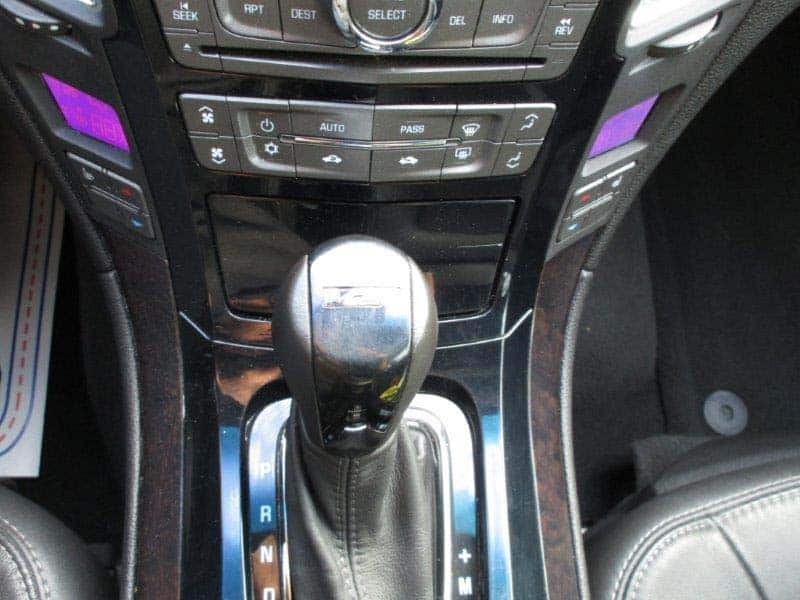Car of the Month January – 2012 Cadillac CTS-V
- Orginally Dyno at 425 RWHP and 440 FPT
- Installed:
- Kooks Headers
- Corsa EPA catted X-Pipe
- Touring exhaust system
- K&N Air Filter
- Lowered
- APR Front Wind Splitter
- chrome black grille
- Re-Dynoed and Tuned
- We now have 525HP and 500 Foot pounds of torque. The exhaust, headers, cold air tube and K&N filter and with a tune netted 100hp at the wheels and 60 more Ft. pounds of torque.(This car comes supercharged from the dealer)
- All professionally installed by JD’s Auto Repair and High Performance Center
See the gallery for this 2012 Cadillac CTS-V
Click to see our Gallery
The Cadillac CTS-V is a high-performance version of the Cadillac CTS. The CTS-V series includes three body styles, all of which feature a pushrod OHV V-8 engine and a sport-tuned suspension. The four-door CTS-V sedan was introduced in 2004, and the CTS-V sport wagon and coupe were introduced in 2010 for the 2011 model year. The sedan competes in the North American consumer market against other high-performance luxury sedans and “echoes” their quality but is a more affordable option than competitors as the Audi RS6, BMW M5, and Mercedes E63 AMG.
The second generation CTS-V is based on the new GM Sigma II platform. The rear-wheel-drive platform is the basis for the 2008 to present Cadillac CTS base model with which the CTS-V shares most of the body work. The suspension features coil springs front and rear. The front suspension is a control arm arrangement while the rear is an independent multi-link suspension. To improve the handling and comfort, the 2009 CTS-V uses BWI Group’s MagneRide technology. The dampers, filled with magnetorheological fluid, are adjusted based on sensor readings that happen at 1 ms intervals.[6] The sedan has four-wheel disc brakes similar to the first generation. The front brakes were increased in size to 14.96 in (380 mm) ventilated discs with six piston Brembo fixed calipers. The rear brakes are 14.37 in (365 mm) ventilated rotors with four piston calipers. Steering is speed-sensing hydraulic-assist rack-and-pinion. The steering ratio is 16.1:1. Tire sizes are 255/40ZR19 front and 285/35ZR19 rear on 19×9.0 inch and 19×9.5 inch wheels front and rear.
The powerplant in the 2009 CTS-V is a supercharged OHV 6.2 L LSA V-8, based on the LS9 V-8 from the Chevrolet Corvette C6 ZR1. It produces 556 hp (415 kW) and 551 lb·ft (747 N·m) of torque.[7][8] The choice to use an Overhead valve (OHV) arrangement (also known as a pushrod engine) is unique in the luxury performance sedan market where competitors typically use dual overhead camshaft (DOHC) engines. The engine is produced in GM’s Silao, Mexico engine assembly plant. The LSA engine has a bore and stroke of 4.06×3.62 inches (103.25×92.0 mm).[7] The engine block is cast aluminum 319-T5 alloy with cast-iron cylinder liners. The crankshaft is forged steel using powdered-metal connecting rods. Pistons are high-silicon Hypereutectic Aluminum alloy replacing the forged aluminum used in the LS9 engine. The compression ratio is 9.1:1. The cylinder heads are based on the Corvette’s LS3 head and are cast from type 356-T6 Aluminum alloy. The exhaust manifolds are cast iron. The supercharger is a twin four-lobe Roots-type unit displacing 1.9 L. It is Eaton’s Twin Vortices Series (TVS) generating a maximum boost of 9.0 psi (62.1 kPa). Intake air is cooled with a water-to-air intercooler built directly into the supercharger unit.

There are manual and automatic transmission choices. The manual is a Tremec TR-6060 six-speed transmission with a short-throw shifter, twin disk clutch and dual-mass flywheel. The 6L90 automatic is a paddle shift conventional (planetary gearing and torque converter-based) automatic six-speed.
General Motors states a 0-60 mph time of 3.9 seconds for the CTS-V Sedan and 4.0 seconds for the CTS-V Coupe and Wagon.
Quarter mile running as fast as 11.97 seconds at 116.9 MPH with a 60-foot @ 1.76 seconds.


